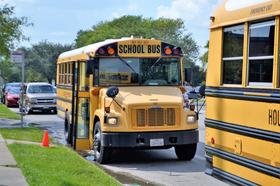How School Zoning Affects Property Values and Public School Quality
Understanding how school zoning affects property values and public school quality is essential for families navigating housing decisions. In 2025, zoning boundaries continue to influence neighborhood demographics, long–term home equity, and the academic strength of local schools. Whether a family is selecting a new home or an educator is evaluating community demand, the connection between zoning and school outcomes shapes nearly every part of the public-education landscape.
This article explains how school zoning affects property values and public school quality through clear examples, current research, and practical considerations for parents. It also highlights the policy debates surrounding attendance boundaries and provides tools for comparing school options.
Throughout the discussion, the focus remains on the central question: how school zoning affects property values and public school quality across different communities.
Why Zoning Matters in Public Education
School zoning assigns students to specific campuses based on their residential address. Families often center their search for homes around district boundaries because they understand how school zoning affects property values and public school quality over time.
Three core dynamics shape this relationship:
High performing schools attract sustained buyer demand.
Neighborhoods with stable demand typically see rising home values.
Increased property values, in turn, boost local tax revenues which can support school improvements.
As a result, how school zoning affects property values and public school quality becomes a circular relationship in many communities.
For parents comparing districts, resources such as Public School Review provide school profiles that help clarify these zoning differences.
How School Zoning Influences Property Values
Homebuyers regularly cite neighborhood schools as a top consideration, which is why real estate markets reveal how school zoning affects property values and public school quality in measurable ways.
Price Premiums for High Rated Zones
Buyers often pay a premium to secure an address zoned for strong schools. Even modest improvements in school performance can create noticeable shifts in home prices. This pattern illustrates how school zoning affects property values and public school quality in competitive markets where families prioritize stability and long-term appreciation.
Boundary Lines That Change Financial Outcomes
When attendance boundaries shift, homeowners may experience price gains or losses depending on the new zoning. This is one of the clearest examples of how school zoning affects property values and public school quality because reassignment can separate families from the academic environment they originally paid for.
Access to Specialized Programs
Magnet, STEM, and International Baccalaureate programs can further shape how school zoning affects property values and public school quality. Homes zoned for campuses with these programs typically see higher demand, even when the overall district performance is average.
How School Zoning Shapes Public School Quality
Beyond real estate, zoning policies significantly influence how school zoning affects property values and public school quality from the school-side perspective.
Enrollment Patterns and Class Size
Zoning determines how many students access a given campus. Overcrowding or under-enrollment can affect resources, staffing, and instruction, demonstrating how school zoning affects property values and public school quality through operational realities.
Revenue and Resource Allocation
Because many districts rely on property taxes, high-value neighborhoods generate more funding for nearby schools. This mechanism shows how school zoning affects property values and public school quality as wealthier areas often benefit from enhanced facilities, technology, and enrichment.
Student Diversity and Opportunity
Attendance boundaries shape school demographics. Communities that understand how school zoning affects property values and public school quality are increasingly considering equity-based zoning reforms to diversify enrollment and close achievement gaps.
For deeper insight into broader enrollment trends, families can consult district profiles at Public School Review
2025 Trends: How School Zoning Affects Property Values and Public School Quality Today
Several trends are redefining how school zoning affects property values and public school quality.
1. Increased Transparency Tools
Interactive boundary maps and school-performance dashboards now offer real-time insights into how school zoning affects property values and public school quality. Buyers can compare attendance zones long before scheduling a home tour.
2. Boundary Redraws in Growing Cities
Rapid growth in regions such as Texas, Florida, and the Carolinas has prompted extensive rezoning. These changes reveal how school zoning affects property values and public school quality when rising enrollment forces districts to balance crowding with neighborhood continuity.
3. Expanded School Choice Options
Although zoning still anchors enrollment, open-enrollment policies and charter-school expansion provide alternatives. Even in these flexible systems, families still consider how school zoning affects property values and public school quality as a primary factor in housing decisions.
4. Equity-Focused Boundary Adjustments
Districts seeking socioeconomic integration are redefining how school zoning affects property values and public school quality by prioritizing diversity and resource balance over strict neighborhood boundaries.
Table: How School Zoning Affects Property Values and Public School Quality
| Factor | Impact on Property Values | Impact on School Quality |
|---|---|---|
| Academic Ratings | Higher demand, higher prices | Reputation drives enrollment stability |
| Boundary Changes | Can raise or reduce home equity | Alters demographics and funding |
| Specialized Programs | Price premiums | Enhanced curriculum and opportunities |
| Funding Models | Higher tax bases increase value | Better facilities and staffing |
This comparison reinforces how school zoning affects property values and public school quality by showing the direct and indirect links between community wealth and school operations.
Policy Debates: Balancing Fairness and Investment
Local leaders continually revisit how school zoning affects property values and public school quality because decisions can create winners and losers across neighborhoods.
Key debates include:
Ensuring fair access to high-performing schools
Preventing overcrowding while maintaining neighborhood cohesion
Reducing inequities between affluent and lower income zones
Balancing homeowner expectations with district-wide needs
These issues demonstrate how school zoning affects property values and public school quality on a community scale, often shaping long-term development patterns.
For readers comparing public and private options, resources such as Private School Review offer additional context on academic alternatives.
Practical Guidance for Families
Parents evaluating how school zoning affects property values and public school quality should consider the following:
Review district boundary maps each year, especially in fast-growing cities.
Compare multiple data points, including test scores, student support services, and program offerings.
Visit schools to understand climate and culture.
Anticipate potential boundary changes when purchasing a home.
Examine long-term neighborhood development plans.
Families often rely on websites such as Public School Review to evaluate how school zoning affects property values and public school quality in different states.
Conclusion
A growing number of families want a clear understanding of how school zoning affects property values and public school quality because the relationship shapes educational opportunity, community investment, and long-term financial security. While zoning policies continue to evolve, the core connection between neighborhood boundaries, school performance, and home values remains central to how communities grow.
As schools adapt to demographic changes and districts revisit attendance maps, parents benefit from reliable information and thoughtful planning. With the right tools and awareness of how school zoning affects property values and public school quality, families can make confident decisions about where to live and learn in 2025.














